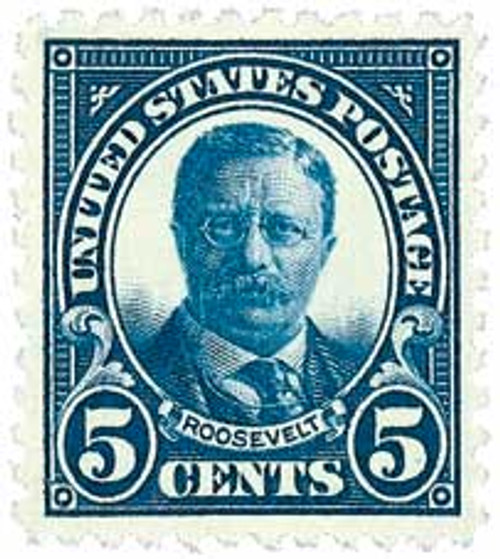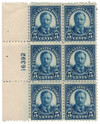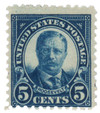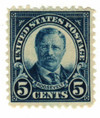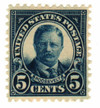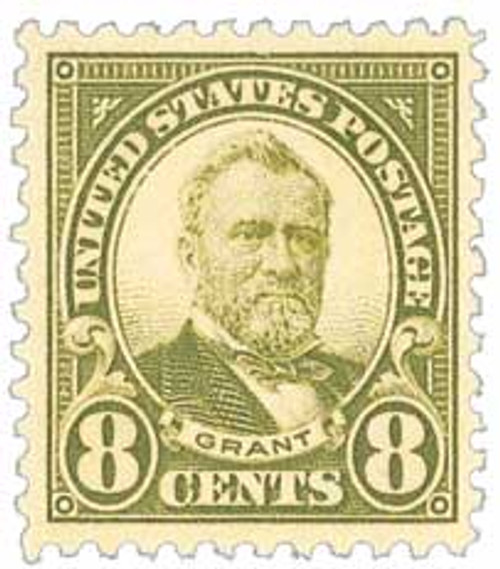
# 557 - 1922 5c Theodore Roosevelt, dark blue
been for my experiences in North Dakota.”
Teddy Roosevelt And Teddy Bears
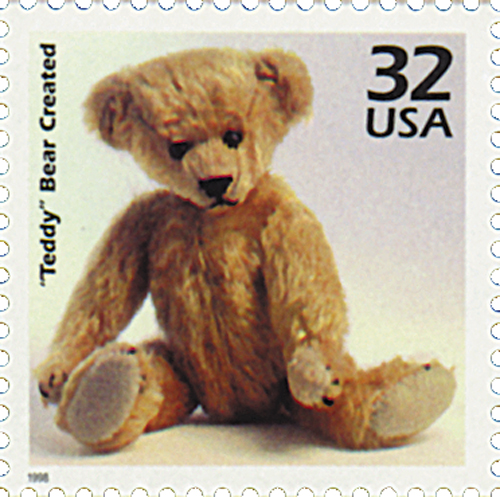
On November 16, 1902, a cartoon appeared in a newspaper that inspired the creation of the first teddy bears, named after President Theodore “Teddy” Roosevelt.
In November 1902, Mississippi Governor Andrew Longino invited President Theodore Roosevelt on a bear-hunting trip. As the trip went on, many of the other hunters had killed their share of animals, but Roosevelt hadn’t.
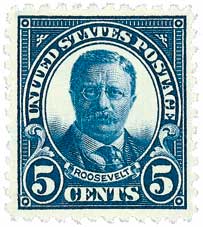
Several of Roosevelt’s attendants cornered and clubbed an American black bear before tying it to a tree. When they called Roosevelt over to shoot the bear, he refused, claiming it was unsportsmanlike. He did suggest that the bear be killed to be put out of its misery because it was badly injured.
Word of the incident spread and on November 16, the Washington Post ran a political cartoon of the event drawn by Clifford Berryman. The cartoon inspired Russian-Jewish immigrant Morris Michtom, who ran a candy shop by day and created stuffed animals by night. He crafted a small stuffed bear cub and sent it to President Roosevelt asking permission to use his name.
With Roosevelt’s approval, Michtom placed one of these bears in his shop window with a sign calling it “Teddy’s Bear.” The bears were an instant success and he quickly founded the Ideal Novelty and Toy Company.
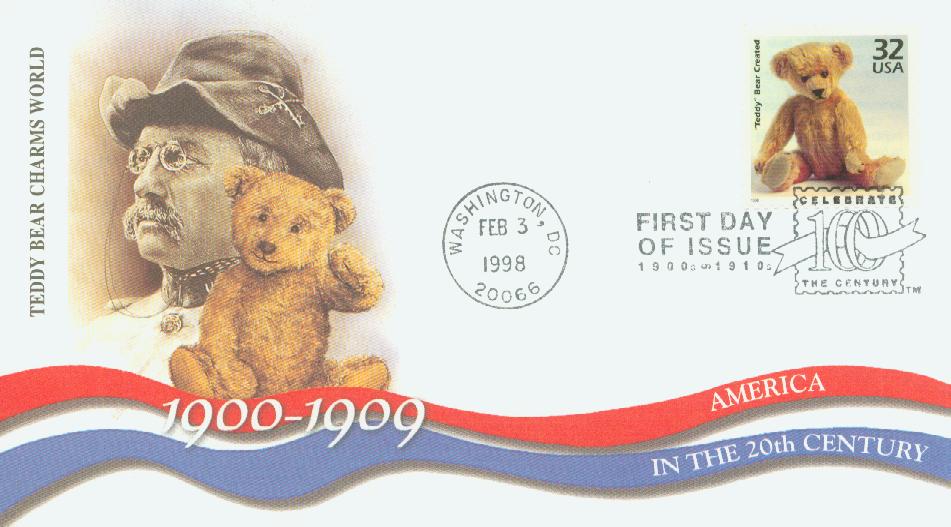
At the same time, across the world in Germany, Richard Steiff also designed a Teddy bear for the Steiff firm that was displayed at the Leipzig Toy Fair in March 1903. The Steiff Company had been making lifelike toy animals since Margarete Steiff founded it in 1880. By 1906, several other manufacturers were producing “Roosevelt Bears.” Women carried them everywhere they went, children took pictures with them, and Roosevelt even used one as a mascot in his bid for reelection.
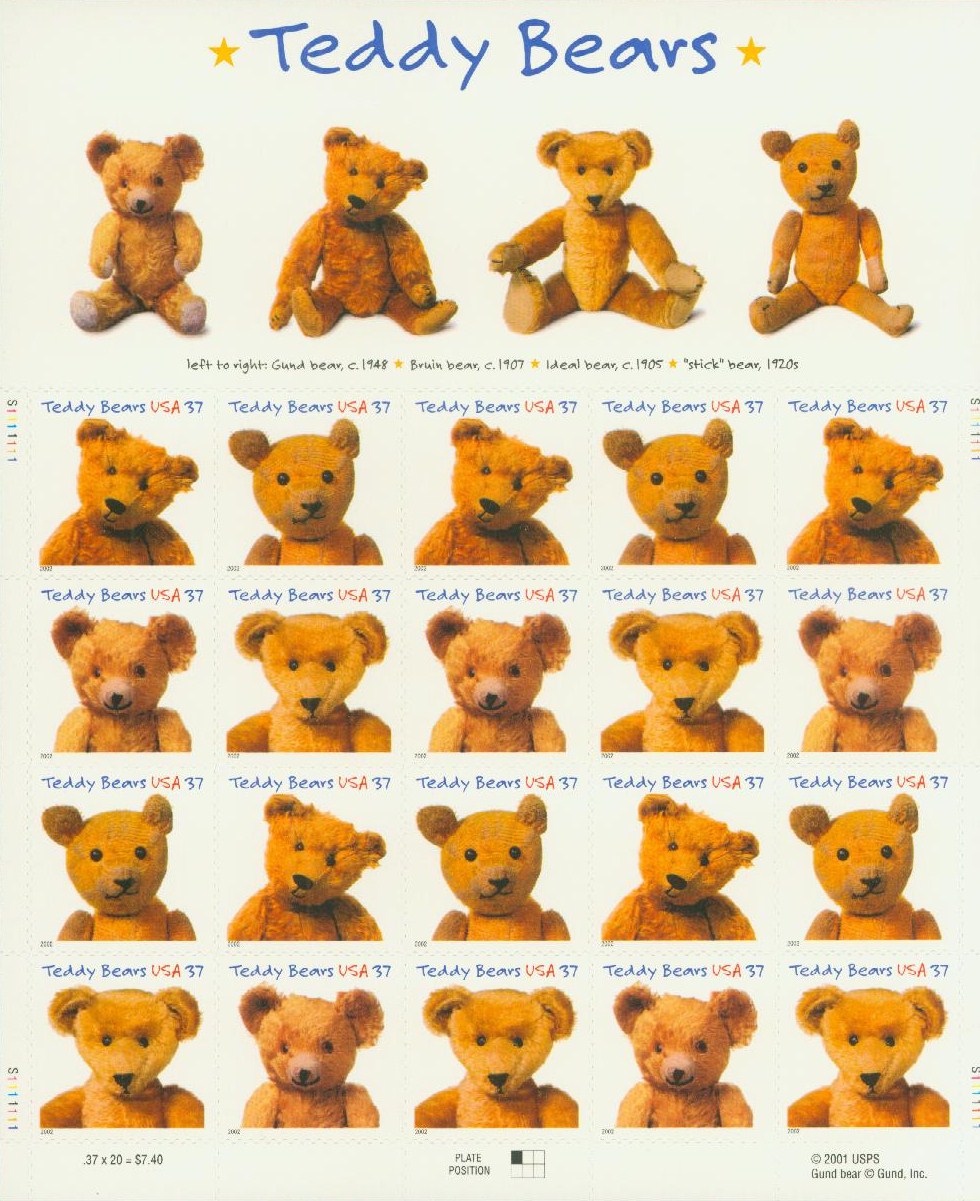
Teddy bears quickly became a part of popular culture. American teacher Seymour Eaton wrote the children’s book series, The Roosevelt Bears. And composer John Bratton wrote “The Teddy Bear Two Step,” which was combined with Jimmy Kennedy’s lyrics to become “The Teddy Bears’ Picnic.”
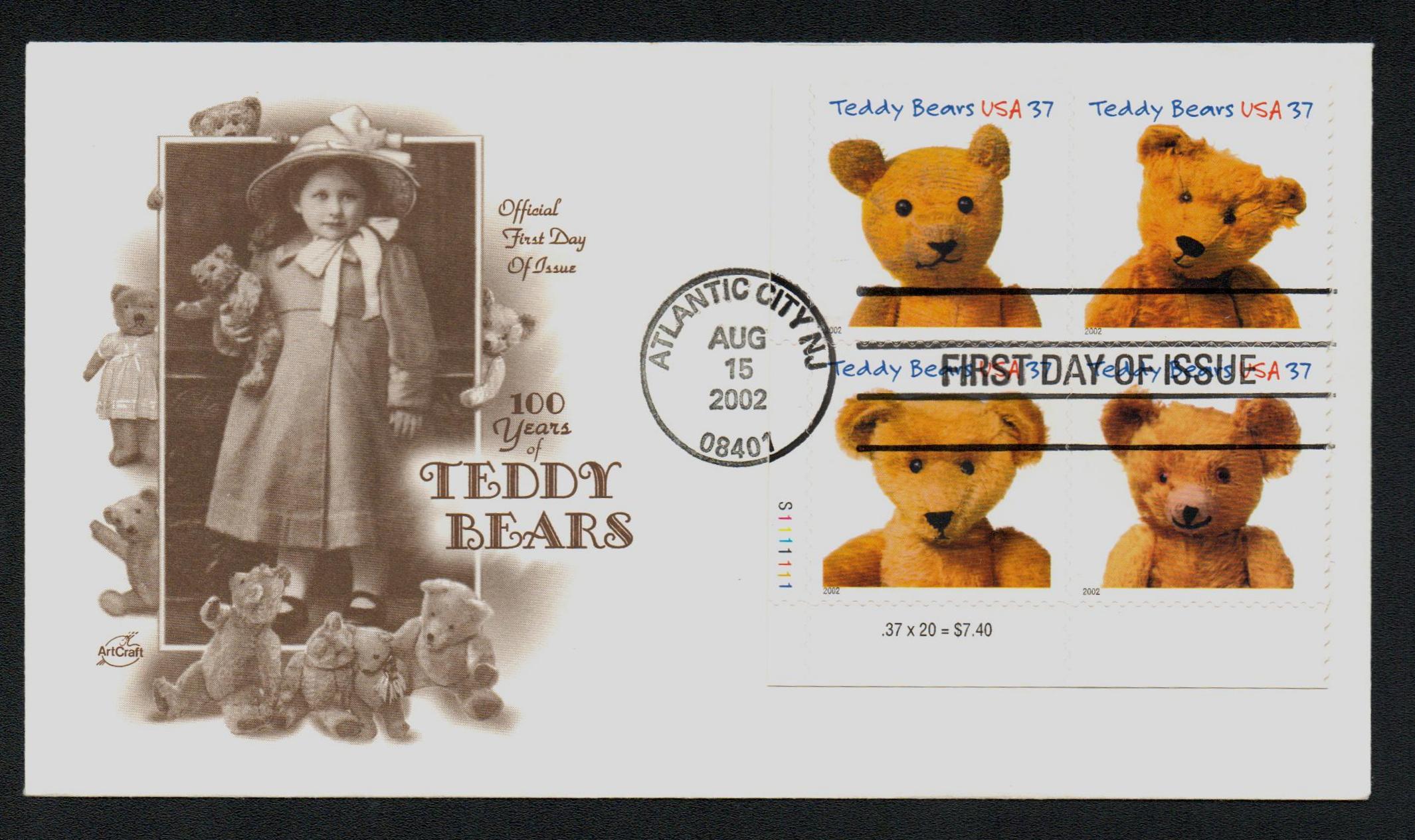
Perhaps the most famous Teddy bear is Winnie the Pooh, created by A.A. Milne for a collection of stories in 1926. Pooh remains popular with children today as the subject of several movies, cartoons, toys, clothing, and more. Other famous Teddy bears include Teddy Ruxpin, Care Bears, and Paddington.
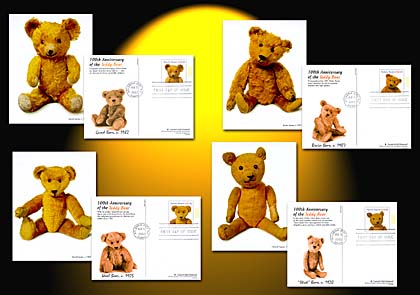
The world’s first Teddy bear museum was established in Petersfield, Hampshire, England, in 1984. Though it closed in 2006, several others are still open around the world. Teddy bear festivals are also a popular occasion around the world and in the US, September 7th is National Teddy Bear Day.
Click here to view the cartoon that inspired the first teddy bears.
been for my experiences in North Dakota.”
Teddy Roosevelt And Teddy Bears

On November 16, 1902, a cartoon appeared in a newspaper that inspired the creation of the first teddy bears, named after President Theodore “Teddy” Roosevelt.
In November 1902, Mississippi Governor Andrew Longino invited President Theodore Roosevelt on a bear-hunting trip. As the trip went on, many of the other hunters had killed their share of animals, but Roosevelt hadn’t.

Several of Roosevelt’s attendants cornered and clubbed an American black bear before tying it to a tree. When they called Roosevelt over to shoot the bear, he refused, claiming it was unsportsmanlike. He did suggest that the bear be killed to be put out of its misery because it was badly injured.
Word of the incident spread and on November 16, the Washington Post ran a political cartoon of the event drawn by Clifford Berryman. The cartoon inspired Russian-Jewish immigrant Morris Michtom, who ran a candy shop by day and created stuffed animals by night. He crafted a small stuffed bear cub and sent it to President Roosevelt asking permission to use his name.
With Roosevelt’s approval, Michtom placed one of these bears in his shop window with a sign calling it “Teddy’s Bear.” The bears were an instant success and he quickly founded the Ideal Novelty and Toy Company.

At the same time, across the world in Germany, Richard Steiff also designed a Teddy bear for the Steiff firm that was displayed at the Leipzig Toy Fair in March 1903. The Steiff Company had been making lifelike toy animals since Margarete Steiff founded it in 1880. By 1906, several other manufacturers were producing “Roosevelt Bears.” Women carried them everywhere they went, children took pictures with them, and Roosevelt even used one as a mascot in his bid for reelection.

Teddy bears quickly became a part of popular culture. American teacher Seymour Eaton wrote the children’s book series, The Roosevelt Bears. And composer John Bratton wrote “The Teddy Bear Two Step,” which was combined with Jimmy Kennedy’s lyrics to become “The Teddy Bears’ Picnic.”

Perhaps the most famous Teddy bear is Winnie the Pooh, created by A.A. Milne for a collection of stories in 1926. Pooh remains popular with children today as the subject of several movies, cartoons, toys, clothing, and more. Other famous Teddy bears include Teddy Ruxpin, Care Bears, and Paddington.

The world’s first Teddy bear museum was established in Petersfield, Hampshire, England, in 1984. Though it closed in 2006, several others are still open around the world. Teddy bear festivals are also a popular occasion around the world and in the US, September 7th is National Teddy Bear Day.
Click here to view the cartoon that inspired the first teddy bears.

